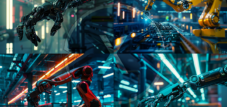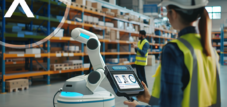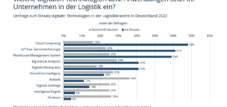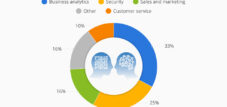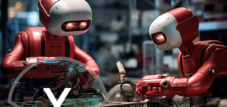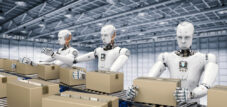Robot Intelligence – The Path to an Intelligent Machine: The Importance of Machine Learning, Robotics and Neural Networks
Language selection 📢
Published on: August 15, 2024 / Update from: August 15, 2024 - Author: Konrad Wolfenstein
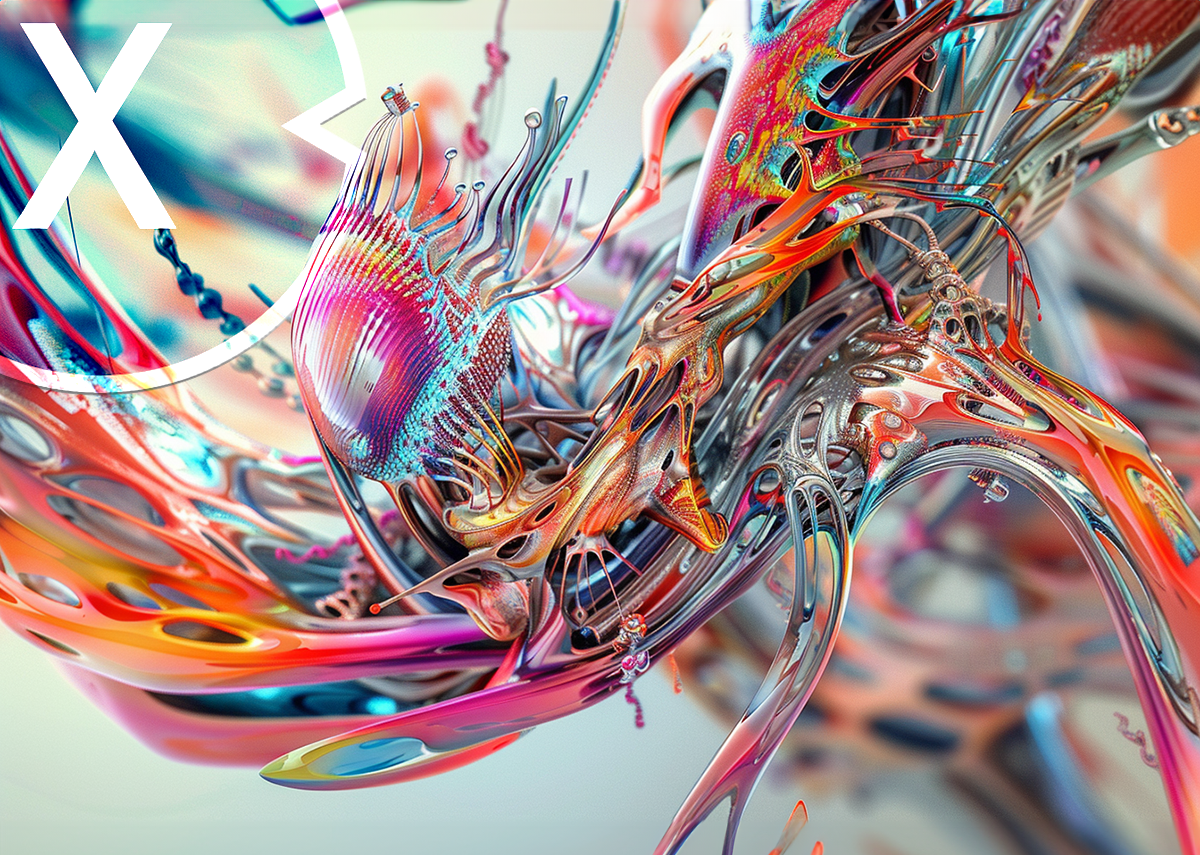
Robot Intelligence – The Path to Intelligent Machines: The Importance of Machine Learning, Robotics and Neural Networks – Image: Xpert.Digital
💡🤖 Robot Intelligence - The path to an intelligent machine
🚀 Artificial intelligence (AI) is a diverse and rapidly evolving field that has made enormous progress in the last few decades. There are different approaches to developing intelligent systems. Three of the most important branches within AI research are machine learning, robotics and artificial neural networks (ANNs). Each of these areas has specific areas of application and challenges that shape their development.
🌠 Machine learning
Machine learning (ML) is a core area of artificial intelligence and focuses on the development of algorithms that enable computers to learn from data and make predictions or decisions without being explicitly programmed. These algorithms analyze large amounts of complex data to identify patterns and draw conclusions from them. This allows machines to continually improve and adapt to new data.
There are three main types of machine learning:
1. Supervised learning
This is an approach that trains the machine using labeled data. This means that the input data is labeled with the correct outputs. The machine learns to link these inputs with the correct outputs and, after training, can correctly classify new, similar data. An example of supervised learning algorithms is classification, which divides objects into categories.
2. Unsupervised learning
Unlike supervised learning, unsupervised learning does not use labeled data. Instead, the algorithm tries to find patterns and connections in the input data. A typical area of application is clustering, in which data is divided into groups without these groups having been previously defined.
3. Reinforcement learning
This approach is based on the principle of reward and punishment. An agent interacts with its environment and learns through trial and error which actions produce the best results. This learning method is often used in areas such as robotics or game development, where complex decisions must be made.
Machine learning is now used in a wide range of applications, from image and speech recognition to medical diagnostics and autonomous vehicles. The constant development and optimization of these algorithms plays a crucial role in expanding AI to new areas of application.
🤖 Robotics
Robotics is another fascinating field of artificial intelligence that deals with the development and training of robots capable of interacting with people and the environment in a predictable and intelligent manner. Robots can be used in a wide variety of environments, be it industrial, domestic or even space. An important aspect of modern robotics is the integration of artificial intelligence to expand the capabilities of robots.
Current research areas in robotics include:
1. Soft robotics
This area is concerned with the development of robots that are made of flexible materials and can move smoothly. These robots can adapt to different shapes and surfaces, making them particularly suitable for use in unstructured or sensitive environments, such as medicine.
2. Touch robotics
Robots capable of detecting and responding to touch are an important step towards more natural human-machine interaction. This capability is critical for applications that require robots to work safely with humans, such as in nursing or surgery.
3. Humanoid robots
These robots are designed to resemble the human body and can mimic human movements. They find application in a variety of areas, from the entertainment industry to complex tasks in dangerous environments inaccessible to humans.
Robotics benefits greatly from advances in machine learning and neural networks, as these technologies significantly improve robots' ability to complete complex tasks. There is currently intensive research into how deep learning and other AI methods can enable robots to take on increasingly demanding tasks and even develop a certain form of self-awareness.
🌐 Artificial Neural Networks (ANNs)
Artificial neural networks (ANNs) are another important area within artificial intelligence. They are based on how the human brain works and aim to recreate a similar structure to enable learning processes. ANNs consist of numerous layers of artificial neurons connected to each other. These networks are able to recognize patterns in data and make complex decisions.
There are different types of ANNs, each with specific applications and benefits:
1. Deep Neural Networks
These networks consist of multiple layers of neurons that pass information from the input layer to the output layer. The deep structure makes them able to recognize very complex patterns in the data, making them ideal for tasks such as image recognition or language processing.
2. Convolutional Neural Networks (CNNs – Convolutional Neural Networks)
These special neural networks are primarily used in image processing. They are based on the principle of convolution, which allows features to be extracted in images by gradually processing them from the input layer to the output layer. CNNs have enabled major advances in image classification and object recognition.
3. Recurrent Neural Networks (RNNs – Recurrent Neural Networks)
These networks are designed to process information about sequences of data. They have loops that allow previous information to be stored and used. This is particularly useful for applications such as speech recognition or time series data processing.
📊 Artificial neural networks: Mimicking the brain with impressive results
Although ANNs are often viewed as mimicking the human brain, there are key differences. While neurons in the human brain are not arranged in a linear sequence as is the case in ANNs, these artificial networks still deliver impressive results in many areas, from image recognition to medical image processing to automated word processing.
🚀 Machine learning, robotics and artificial neural networks
Artificial intelligence is developing rapidly and encompasses a wide range of technologies and approaches. Machine learning, robotics and artificial neural networks are three of the central pillars of this development, each presenting their own unique challenges and opportunities. While machine learning forms the basis for many modern AI applications, robotics expands AI's physical presence in the world, and artificial neural networks advance pattern recognition and decision-making capabilities.
Together, these technologies lead to a future in which artificial intelligence will not only be ubiquitous, but also deeply integrated into our daily lives. Whether in automating routine tasks, supporting complex decisions or interacting with our physical environment - the possibilities are almost endless. It is crucial to advance these developments carefully while keeping in mind the ethical and social implications associated with the increasing integration of AI into our society.
📣 Similar topics
- 🤖 Advances in AI: Machine learning and robotics in focus
- 🌐 Future of AI: From machine learning to neural networks
- 👾 Artificial intelligence and its role in modern robotics
- 🧠 ANNs vs. Human Brains: A Deep Comparison
- 🖼️ CNNs and their importance in image processing
- 🎮 Reinforcement Learning: From Robotics to Game Development
- 🩺 Medical imaging and AI: The role of ANNs
- 💬 Automated word processing thanks to neural networks
- 🦾 Humanoid Robots: Current Developments and Applications
- 🔬 Research in Robotics: Soft and touch robotics in trend
#️⃣Hashtags: #ArtificialIntelligence #MachineLearning #Robotics #NeuralNetworks #TechnologicalDevelopment
🦾⚙️🔧 Humanoid Robotics: NVIDIA accelerates the development of humanoid robots with Extended Reality, AI and Omniverse (Metaverse)

Humanoid Robotics: NVIDIA is accelerating the development of humanoid robots with Extended Reality, AI and Omniverse (Metaverse) – Image: Xpert.Digital
A fascinating recent example is a video released by NVIDIA demonstrating how to control a robot using the Apple Vision Pro. In this scenario, a human is in a kitchen and controls a robot by adopting the robot's perspective through the Vision Pro glasses. The hand movements detected by the glasses are transmitted to the robot, allowing humans to control the robot remotely. This enables applications such as the preparation of toast with honey, controlled by humans.
This technology has far-reaching implications, especially in areas where it can be dangerous for people, such as collapsing buildings or other dangerous environments. It's easy to imagine how this technology could be used in rescue missions or to defuse bombs.
More about it here:

🤖🤖 Robot Intelligence – The path to an intelligent machine - What is likely to happen in the future?
⚙️💡 Robot Intelligence – The path to intelligent machines and future prospects
The vision of intelligent machines has long fascinated humanity. The dream of robots capable of solving complex tasks independently has continually inspired both scientists and laypeople. But how far are we really from this vision and where does robot intelligence lead in the future?
🚀 The beginnings of robotics
The history of robotics goes back a long way and has its roots in the early designs and concepts brought to life by visionaries such as Leonardo da Vinci. Da Vinci's mechanical knight in the 1490s can be considered one of the first forerunners of modern robots. With the industrial revolution and the development of the first machines, robotics entered a new phase. In particular, the introduction of computers and advances in electronics contributed significantly to the emergence of modern robots.
🧠 Advances in artificial intelligence
A central factor for progress in robotics is the development of artificial intelligence (AI). AI research began in earnest in the 1950s, but it took decades for significant progress to be made. Today, machine learning and deep learning enable robots to recognize complex patterns and learn from experience. This has significantly expanded the capabilities of robots - from simple, pre-programmed tasks to robust, flexible applications.
🤖 The transition to intelligent machines
Today's robots are able to autonomously perform many tasks that were previously the preserve of humans. For example, modern industrial robots use advanced sensors and algorithms to work precisely and efficiently in manufacturing processes. They can adapt to different environments and respond to changes in real time. Robots are now indispensable in medicine, be it in precise surgery or nursing.
Another area that has made tremendous progress is robot navigation and mobility. Autonomous vehicles are a prime example of this. These vehicles use a variety of sensors and data sources, including cameras, lidar and GPS, to analyze their surroundings and navigate safely.
🦾 Humanoid robots
Humanoid robots that mimic the human body and its movements are another exciting area of development. These robots could play a significant role in the future in areas such as elderly care, customer service or as personal assistants. A well-known example is “Sophia,” a humanoid robot capable of recognizing and responding to human emotions. Such developments demonstrate the potential and complexity involved in creating truly intelligent machines.
⚖️ Ethics and responsibility
However, with the increasing intelligence of machines comes ethical and social challenges. One of the central questions is responsibility for the actions of autonomous robots. Who is responsible if a robot makes a wrong decision? How do we ensure that these machines respect human values and ethical standards? These issues require urgent attention and clear regulation.
There are also concerns about job losses and economic impact. While robots can perform many tasks more efficiently, there is a risk that they will replace jobs and deepen social inequalities. It is important that politics and society work together to develop solutions to ensure that the advantages of robotics do not just benefit a few.
🔮 The future of robotics
The future of robot intelligence promises exciting developments. Here are some trends and technologies that could shape the next few years:
Collaborative robots (cobots)
These robots work directly with humans to complete tasks more efficiently. They are designed to be secure and flexible to ensure seamless interaction with human workers.
Artificial intelligence and machine learning
Continued development in these areas will enable robots to become even more autonomous and adaptable. Robots will be able to solve more complex tasks and learn from larger amounts of data.
Improved sensors and actuators
Advances in sensors and actuators will help robots better perceive their surroundings and carry out more precise movements. This will be particularly important in the area of precision work and medical technology.
Quantum computing
Although it is still in the early stages of development, quantum computing has the potential to take the computing power of robots to new levels. This would allow robots to complete more demanding tasks in less time.
Emotional intelligence
Research is working to equip robots with emotional capabilities to make human interactions more natural and pleasant. This could be useful in areas such as therapy, care and services.
🚀 Robot intelligence and responsibility
The path to intelligent machines is marked by significant advances and promising developments. At the same time, this path brings with it significant challenges and ethical questions. It is important that we accompany the development of robot intelligence responsibly in order to maximize the benefits and minimize potential risks. Only through a balanced approach that balances technological advances, societal needs and ethical considerations can we ensure that the future of robotic intelligence is shaped for the benefit of all.
📣 Similar topics
- 🤖 The fascination of intelligent machines
- 🛠️ The beginnings of robotics
- 🧠 Advances in artificial intelligence
- 🚀 The transition to intelligent machines
- 🤖 Humanoid robots and their role
- ⚖️ Ethics and responsibility in robotics
- 🔮 The future of robotics
- 🧑🤝🧑 Collaborative Robots (Cobots)
- 🧬 Advances in sensors and actuators
- 💻 Quantum computing and robotic intelligence
#️⃣ Hashtags: #Robotics #ArtificialIntelligence #HumanoidRobots #Ethics #FutureTechnology
We are there for you - advice - planning - implementation - project management
Xpert.Digital - Pioneer Business Development
Smart Glasses & KI - XR/AR/VR/MR industry expert
Consumer metaverse or meta -verse in general
If you have any questions, further information and advice, please feel free to contact me at any time.
I would be happy to serve as your personal advisor.
You can contact me by filling out the contact form below or simply call me on +49 89 89 674 804 (Munich) .
I'm looking forward to our joint project.
Xpert.Digital - Konrad Wolfenstein
Xpert.Digital is a hub for industry with a focus on digitalization, mechanical engineering, logistics/intralogistics and photovoltaics.
With our 360° business development solution, we support well-known companies from new business to after sales.
Market intelligence, smarketing, marketing automation, content development, PR, mail campaigns, personalized social media and lead nurturing are part of our digital tools.
You can find out more at: www.xpert.digital - www.xpert.solar - www.xpert.plus






